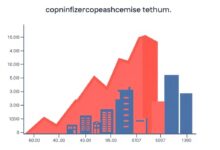How to retire early with dividend stocks

Focus on acquiring shares that yield consistent returns. Select companies with a solid track record of distributing profits, ensuring they are financially robust and demonstrate potential for growth. Prioritize firms in stable industries with a history of increasing payouts, as these can serve as reliable sources of earnings.
Long-term investing is key; patience will reward you with substantial benefits over time. Aim for a diversified portfolio to mitigate risks while enjoying the fruits of your investments. Regularly reinvesting earnings can accelerate wealth accumulation and enhance your financial position.
Consider creating multiple streams of passive income. By strategically allocating funds into various sectors, you create resilience against market fluctuations. This approach not only protects your assets but also positions you favorably for achieving your financial aspirations sooner than anticipated.
The FIRE movement emphasizes the importance of living below your means while making intelligent investment choices. Adopting this mindset allows you to generate wealth more rapidly and reach financial freedom sooner, enabling you to make lifestyle choices based on passion rather than necessity.
Choosing High-Yield Stocks
Focus on companies with a history of increasing payouts. Look for those that have consistently raised their dividends over the last decade, indicating strong financial health and commitment to returning value to shareholders.
Evaluate the payout ratio carefully. A sustainable payout ratio typically falls below 60%, allowing firms to reinvest profits for growth while maintaining dividend payments. Ratios above this mark may signal potential trouble ahead.
Examine sectors known for reliable distributions, such as utilities, consumer staples, and real estate investment trusts (REITs). These industries often exhibit stable cash flows, making them more resilient during economic downturns.
Analyze the yield in context. A high yield can be enticing but may reflect underlying issues if it seems disproportionately elevated compared to industry peers. Investigate recent performance trends and market conditions influencing yield fluctuations.
Diversify across various sectors to mitigate risk while pursuing income generation. Allocating resources into different areas reduces exposure to sector-specific downturns and enhances long-term portfolio stability.
Consider total return potential, balancing yield with capital appreciation prospects. Investing in companies likely to experience growth alongside distributions will contribute positively to your financial plan over time.
Regularly review investments and stay informed about company performance and market changes. This proactive approach ensures alignment with long-term objectives while adapting strategies as necessary for sustained success.
Diversifying Your Portfolio
Implement a strategy that allocates funds across various sectors and asset classes to mitigate risk and enhance passive income potential.
- Sector Allocation: Invest in different industries such as technology, healthcare, utilities, and consumer goods. This balance helps shield your plan from sector-specific downturns.
- Geographic Diversification: Consider international investments. Exposure to foreign markets can provide additional growth opportunities and reduce reliance on domestic performance.
- Asset Classes: Mix equities with bonds, real estate, or commodities. Each asset class reacts differently under varying economic conditions, offering stability during market fluctuations.
- Dividend Growth vs. High Yield: Select a combination of stocks that offer consistent dividend growth alongside those with higher yields. The former provides long-term appreciation, while the latter contributes immediate cash flow.
Regularly review your holdings to ensure alignment with your goals. Adjust allocations based on performance and changing market dynamics to maintain an optimal mix for generating sustainable revenue streams.
- Evaluate Risk Tolerance: Understand your comfort level regarding market volatility to determine the right mix of aggressive versus conservative investments.
- Monitor Economic Indicators: Stay informed about interest rates, inflation trends, and economic cycles that impact stock performance.
- Rebalance Periodically: Realign your portfolio at least annually or after significant market shifts to maintain desired asset allocation ratios.
This structured approach enhances the likelihood of achieving financial independence through resilient income sources over time.
Reinvesting Dividends Wisely
Allocate a portion of your earnings towards reinvestment in high-quality shares. This approach enhances your potential for passive income while compounding growth over time. Select companies with a history of robust dividend increases, as they often indicate stability and strong management.
Consider utilizing a Dividend Reinvestment Plan (DRIP). This allows you to automatically purchase additional shares using the dividends you receive, accelerating your portfolio’s growth without incurring transaction fees. Monitor these investments regularly to ensure they align with your long-term investing plan.
Diversify your reinvestments across various sectors to mitigate risks associated with market fluctuations. By spreading investments, you can capture gains from different industries, balancing out underperformance in others.
Focus on the total return rather than just the yield. Assess how reinvesting impacts both capital appreciation and passive income generation. High-yield options may seem attractive but can carry higher risks; balance these against solid performers with sustainable payout ratios.
Regularly review and adjust your reinvestment strategy according to changes in market conditions or personal financial goals. A proactive approach ensures that your investment aligns with evolving priorities and maintains its trajectory toward enhancing future income streams.
Monitoring Market Trends
Identify key indicators such as earnings reports, interest rates, and economic forecasts to assess market conditions. Track sectors showing growth potential, particularly those that align with your long-term investing plan.
Utilize financial news platforms and analytical tools to stay updated on stock performance. Look for patterns in price movements and trading volumes to gauge investor sentiment.
Incorporate technical analysis by examining charts for support and resistance levels. These insights can help determine optimal entry and exit points for your investments.
Set alerts for significant market shifts or specific stocks of interest. This proactive approach ensures you remain informed without constantly monitoring the market.
Review macroeconomic trends regularly, focusing on inflation rates and employment data, as these directly impact consumer spending and corporate profits.
Engage with investment communities online to exchange insights and perspectives. Collaborating with other investors can reveal overlooked opportunities or risks associated with particular assets.
Adjust your portfolio based on emerging trends while maintaining a focus on your overall strategy. Ensure that decisions reflect both short-term signals and your long-term goals.
By consistently monitoring these factors, you’ll enhance your ability to make informed decisions, driving progress toward financial independence through wise stock selection.







